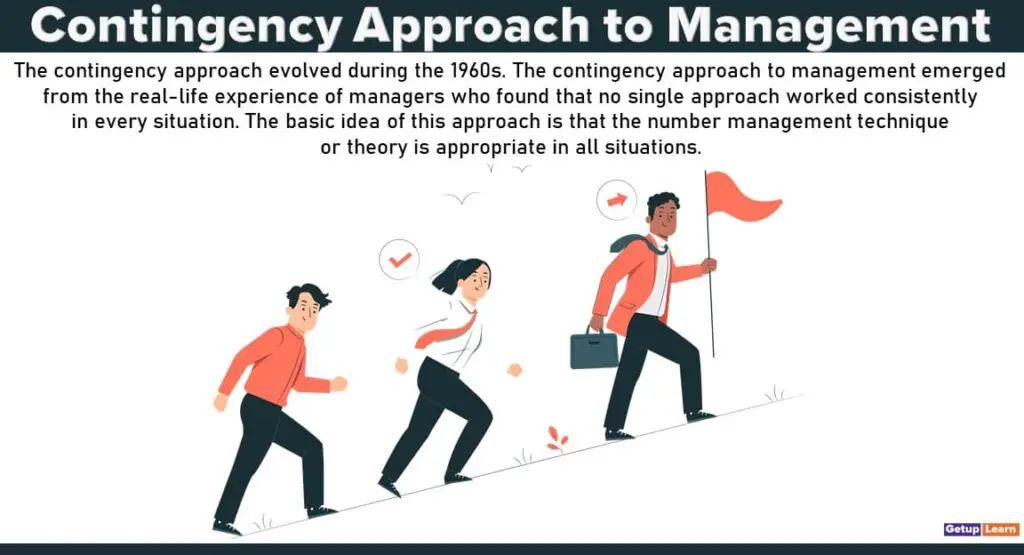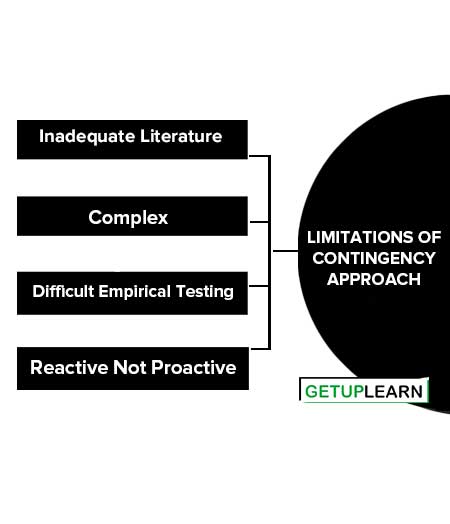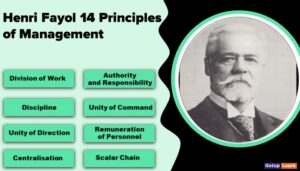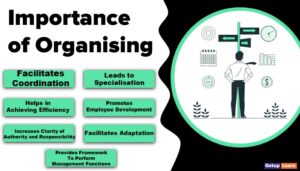Table of Contents
- 1 What is Contingency Approach to Management?
- 2 Contingency or Situational Approach to Management
- 3 Features of Contingency Approach
- 4 Advantages of Contingency Approach
- 5 Limitations of Contingency Approach
- 6 Relationship between Systems and Contingency Approaches
- 7 Implications of Contingency Approach
- 8 FAQ Related to Contingency Approach to Management
What is Contingency Approach to Management?
The contingency approach evolved during the 1960s. The contingency approach to management emerged from the real-life experience of managers who found that no single approach worked consistently in every situation. The basic idea of this approach is that the number management technique or theory is appropriate in all situations.
The main determinants of a contingency are related to the external and internal environment of an organization. The process, quantitative, behavioural, and systems approach to management did not integrate the environment. They often assumed that their concepts and techniques have universal applicability.

For example, process theorists often assume that strategic planning applies to all situations; quantitative experts generally feel that linear programming can be used under all conditions; behavioural theorist usually advocates participative goal setting for all superior-subordinate pairs; and the system advocates tend to emphasize the need for computerized information flows in all situations.
On the other hand, practising managers find out that a particular concept or technique from the various approaches does not work effectively in various situations. The theorists accuse practitioners of not applying the technique properly, and the practitioners accuse the theorists of being unrealistic. The contingency approach does incorporate the environment and attempts to bridge this existing theory-practice gap.
Contingency or Situational Approach to Management
The contingency approach, also known as the situational approach, Environmental change and uncertainty, work technology, and the size of a company are all identified as environmental factors impacting the effectiveness of different organizational forms. According to the contingency perspective, stable environments suggest mechanistic structures that emphasize centralization, formalization, standardization, and specialization to achieve efficiency and consistency.
Certainty and predictability permit the use of policies, rules, and procedures to guide decision-making for routine tasks and problems. Unstable environments suggest organic structures which emphasize decentralization to achieve flexibility and adaptability.
Uncertainty and unpredictability require general problem-solving methods for non-routine tasks and problems. Paul Lawrence and Jay Lorsch suggest that organizational units operating in differing environments develop different internal unit characteristics and that the greater the internal differences, the greater the need for coordination between units.
A contingency approach to management advocates that managerial actions and organizational design must be appropriate to the given situation and that a particular action is valid only under certain conditions. There is no one best approach to management and it all depends on the situation.
In other words, managerial action is contingent upon the external environment. There is no one best approach for all situations. What a manager does depends upon a given situation and there is an active inter-relationship between the variables in a situation and the managerial action.
Contingency theory attempts to analyze and understand these interrelationships with a view towards taking the specific managerial actions necessary to deal with the issue. This approach is both analytical and situational, with the purpose of developing a practical answer to the question at hand.
Features of Contingency Approach
These are the features of contingency approach explained below:
- Management is situational in nature. The technique of management depends on the complexity of the situation.
- It is the ‘if and ‘then ‘approach to management, ‘If’ represents the independent variable and ‘then’ represents the dependent management variable or the technique to be adopted in that situation. ‘If’ workers have strong physiological needs, ‘then’ financial motivators should be adopted and ‘If’ they have strong higher-order needs, ‘then’ non-financial motivators should be adopted.
- Management principles are not universal in nature as there is no best style of management. Management is situational and managerial actions depend upon the environmental circumstances.
- It helps in understanding complex organizations as it focuses on the multivariate nature of organizations. It helps an organization to operate under different environmental conditions. Rather than having a specific solution to solve problems, it provides a framework where every answer depends upon environmental conditions. The same problem can have different solutions at different points in time and different problems can have the same solution at the same point in time.
- It provides insight into an organization’s adaptability to internal and external environments. It is a matter of fitting the inner climate to its external environment.
Advantages of Contingency Approach
These are the advantages of contingency approach explained below:
- It is an integration of different schools of thought; classical, behavioural and systems approach. It integrates the principles of different schools of thought and applies them contingent upon the needs of the situation.
- It is pragmatic in nature as the solution to every problem is found after analyzing the situation.
- It follows the technique of multivariate analysis. It thinks of all possible variables or factors that affect the situation and adopts the best.
- It is adaptive in nature. It does not presume a pre-designed structure of the organization but adopts a structure that helps the organization adapt to the environment.
- It helps to design the organization structure and plan the information decision systems. A small-sized organization may be centralized and a large-sized organization may be decentralized in structure.
- It helps to devise motivational and leadership approaches to motivate the workers. The autocratic style may be adopted to deal with unskilled workers and the participative style to deal with skilled workers. The contingency approach to management is considered a leading branch of management thought today.
Limitations of Contingency Approach
In spite of the various contributions, the contingency approach has not been acknowledged as a unified theory of management because it suffers from some limitations. These are the limitations of contingency approach briefly explained below:

Inadequate Literature
Contingency approach suffers from the inadequacy of literature. Therefore, it has not adequately spelt out various types of actions which can be taken under different situations. It is not sufficient to say that ‘managerial action depends on the situation.’
The approach should provide ‘if this is the situation, this action can be taken’. Unless this is done, the approach cannot offer much assistance to the practice of management. No doubt, research have been conducted in this direction but, by and large, they have not satisfied the needs of managers.
Complex
The suggestion of the approach is very simple, that is, managers should do according to the needs of the situation. However, when put into practice this becomes very complex. Determination of a situation in which managerial action is to be taken involves analysis of a large number of variables with multifarious dimensions.
Therefore, there is a possibility that managers, who are always short of time, may ignore the thorough analysis of all these variables and may resort to short-cut and easier ways.
Difficult Empirical Testing
Contingency approach, being complex, presents problems in testing the precepts of the theory. For empirical testing of a theory, it is necessary that some methodology is available. No doubt, the methodology is available but because of the involvement of too many factors, testing becomes difficult.
For example, contingency theory suggests that the greater the degree of congruence between various parts of organisational components, the more effective will be organisational behaviour at various levels. This lacks empirical validity and hence cannot be adapted to managerial actions.
Reactive Not Proactive
Contingency approach is basically reactive in nature. It merely suggests what managers can do in a given situation. For a given organisation, subsystem constitutes the environment and management can be applied to the supra system also.
Therefore, managers are responsible to manage the environment in such a way that they avoid the undesirable aspects of the environment. Since managers are quite powerful in society, they must be in a position to provide a sense of direction and guidance through innovative and creative efforts especially in coping with environmental changes.
No doubt, these limitations are valid, but the situation remains that at the micro level, managers have to manage according to the contingency approach. They should not ignore the importance of taking action according to the needs of the situation. For analysing the situations, they will have to use their highest skills.
Relationship between Systems and Contingency Approaches
The contingency approach has emerged out of the systems approach. Contingency theorists have accepted the basic tenets of the systems approach. They accept the basic features of the organisation-environment relationship and the dynamic nature of the organisation.
However, they feel that the systems approach is too abstract to apply for managerial action. This can be overcome by modifying the framework of the system and translating it into the operational framework. Therefore, both approaches are related but they differ in certain contexts. A comparison between the two can be presented as follows:
Model of Human Being
The range of activities of human beings is different under the two approaches. Systems usually employ a richer model of human beings than the contingency approach.
The former takes into account the full range of human behaviour in the organisation while the contingency approach, by and large, is interested in the structural adaptation of the organisation to its task environment. Therefore, contingency theorists talk mostly in terms of structural change in the organisation in response to a change in the environment.
Organisational Variables
The systems approach is very broad in considering the organisational variables. It tries to cover personal, social, technical, structural and environmental variables. Therefore, managing involves establishing relationships among these variables and considering them in taking any action.
The contingency approach, on the other hand, concentrates on the structural adaptation of the organisation. This approach tends to predict the ultimate outcome of a disturbance of the organisational equilibrium by a change in the task environment.
Evolution
Major contributors to the systems approach have been social psychologists while sociologists have contributed to the contingency approach. The contingency approach has been built up over the systems approach. Therefore, it is possible that both approaches may merge or profoundly influence each other. In fact, there are signs of convergence between the two approaches.
This is likely to continue and the system approach may specify situations under which a particular type of organisation can function well. In fact, equifinality character of the open system suggests that different strategies can be adopted by an organisation facing a particular problem. Similarly, the contingency approach may provide the process by which the organisation may adapt to its task environment. Both these efforts are quite similar.
Implications of Contingency Approach
The contingency approach is an important addition to the paradigm of the modern theory of management. It is a sophisticated approach to understanding the increasing complexity of organisations. It emphasises the multivariate nature of organisations and attempts to understand how organisations operate under varying conditions.
The approach is directed towards suggesting organisational designs and managerial actions most appropriate to specific situations. The major implications of the contingency approach are as follows:
- Management is entirely situational and there is nothing like universal principles of management or one best way of doing a particular thing. What managers do depends on the circumstances and environment. Lorsch and Lawrence have described the implication of situational management as follows:
“Underlying this new approach (contingency approach) is the idea that the internal functioning of organisations must be consistent with the demands of the organisation task, technology, or external environment, and the needs of its members if the organisation is to be effective.
Rather than searching for the panacea of the one best way to organise under all conditions, investigators have more and more tended to examine the functioning of organisations in relation to the needs of their particular members and the external pressures facing them.
Basically, this approach seems to be leading to the development of a ‘contingency theory of organisation with the appropriate internal states and processes of the organisation contingent upon external requirements and member needs.”
- The approach suggests suitable alternatives for those managerial actions which are generally contingent upon the external and internal environments such as organisational design, strategy formulation, decision systems, influence systems, leadership, and organisational improvement. In all these cases, action alternatives cannot be arranged in advance but have to be identified and adjusted according to the situations in which decisions in respect of these have to be made.
- The contingency approach suggests that since the organisation interacts with its environment, neither the organisation nor any of its subsystems are free to take absolute action. Rather, it has to modify and adjust the actions subject to various forces like social, political, technical, and economic.
Besides, the actions should be according to the needs of the internal state of the organisation or its subsystems. Thus, the basic problem of managing is to align the internal state with the external state.
What is Contingency Approach?
According to the contingency approach, the behaviour of one subunit is dependent on its environment and its relationship with another subunit that has some control over the sequence desired by that sub-unit (Tosi and Hammer, 1974).
What are the limitations of contingency approach?
The following are the limitations of contingency approach:
1. Inadequate Literature
2. Complex
3. Difficult Empirical Testing
4. Reactive Not Proactive.

















